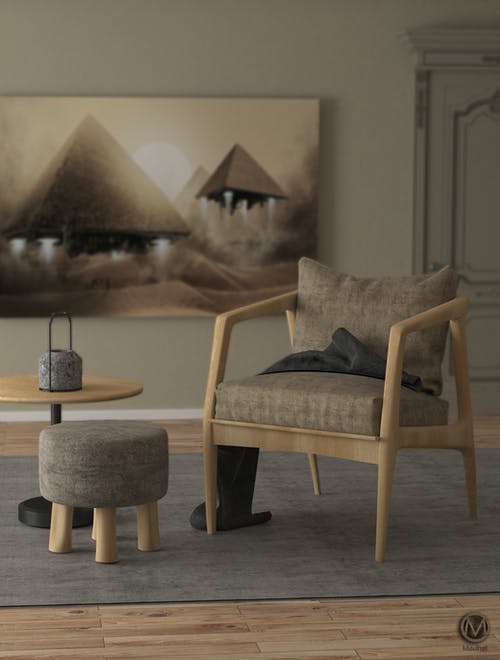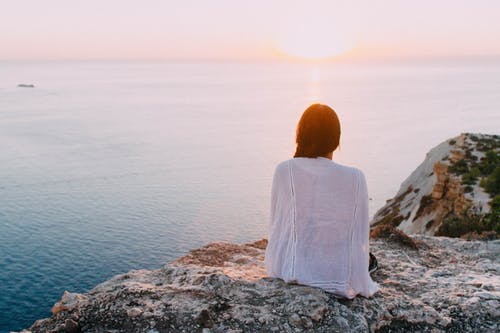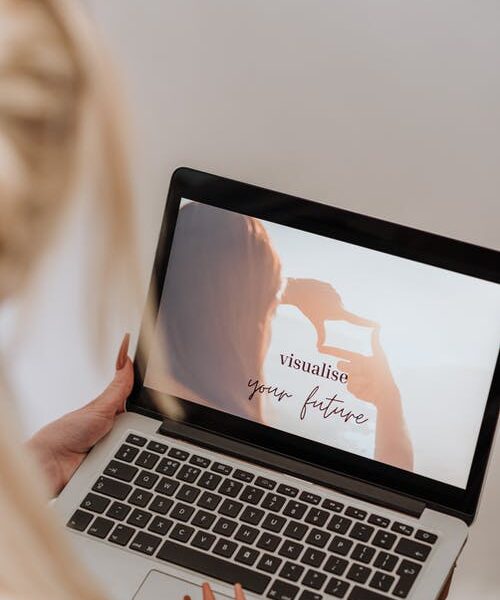What is visualisation? In the context of this blog, visualisation describes the use of our imagination to form mental images of an event, situation or anything else that we desire. Visualisation can also be described as mental rehearsal, where we create images in our mind of us having, being or doing something that we want for ourselves in the future. Whilst on one level we may know it’s a mental trick, the mind and body react similarly whether something is real or imagined and so visualisation can have real physiological effects. You can see this in action for example when we remember something funny that happened long ago and can’t help but laugh, even though it’s not happening now and is just in our mind. Similarly, if you think of an amazing meal you once ate and imagine the smell, taste, texture and use all of your senses, you may start to salivate or even feel hungry. The body can react as if a situation or object is real simply from what goes on in our mind.
In personal development, it’s commonly said that we attract more of whatever we focus on and so by practicing visualisation regularly as if we already have what we want, it’s more likely that we will experience that in our reality. Our subconscious mind starts to act on the images we’ve created, drawing similar experiences into our ‘real life’ and so our ‘thoughts become things’. Through visualisation we can start to experience positive feelings such as calmness, joy and love and so it can have a positive impact on our wellbeing even before anything external changes.

Why use visualisation? Visualisation has been used for a long time in a wide variety of fields. It is extremely popular amongst professional sports men and women such as basketball player Michael Jordan, tennis superstar Billie Jean King, legendary boxer Muhammad Ali and Michael Phelps, the most decorated Olympian of all time. Many successful entrepreneurs such as Oprah Winfrey credit visualisation as part of their success and a host of celebrities are known to be fans of the practice. Jim Carrey is a firm believer in visualisation and infamously reports having written himself a $10 million pay cheque when he was an unknown actor struggling for money. He later earned this exact amount for his role in Dumb and Dumber. Arnold Schwarzenegger, Will Smith, Idris Elba and Jay Z are other well-known fans. Even Walt Disney captured the essence of visualisation is his now well-known quote ‘If you can dream it, you can do it’.
Whilst there are many of these ‘high profile’ examples of celebrities who have hit the big time with their huge dreams and goals, visualisation is becoming more and more popular for ‘everyday’ use in things like job interviews and public speaking for confidence as well as for relaxation purposes. If you want to feel confident about a specific event you would use all of your senses to see yourself acting and feeling confident and everything going well. For relaxation, you could visualise an event you’re feeling tense about such as a flight or medical appointment and imagine everything going smoothly and see yourself acting and feeling calm. Another way in which people use visualisation to relax in general is by picturing a soothing place.

In summary, the main reason for using visualisation is to rehearse something in the way you want to happen, whether that’s something you want to be, have or do – the applications are endless! Through repetition of visualisation, we flood our minds with positive images and so become more programmed to focus on this outcome. This helps to reprogram our natural tendency to ruminate on our fears and anxieties and what could go WRONG!
Where and when can I practice visualisation? The beauty of visualisation is the sheer ease of practice. You don’t need any special equipment or training although guided sessions can easily be found on platforms such as YouTube and popular meditation apps. Courses are available to help learn the techniques but as long as you have the ability to use your imagination, you can start practicing today! As with any practice involving the mind such as meditation and mindfulness, it’s natural that the mind way wander and struggle to keep focus. For this reason you may wish to start with a guided visualisation recording or to set yourself a short timer such as 1 or 2 minutes and build up over time. It may also help for you to start with visualising something ‘simple’ such as texting or calling a friend if you wish to be more sociable and connected with others or picturing yourself folding up and putting clothes away if you desire to be more tidy. You can build up to longer sessions or bigger/ more important subjects in time. Ideally for visualisation you would have a quiet space and a length of time where you won’t be disturbed and can be without your phone or any external distractions to allow your mind the best chance to focus.

How do I do it? Set aside some time where you can be undisturbed and sit or lie down in a comfortable position. You can close your eyes or use an external focus such as a candle or plain wall/ background to rest your gaze on but the key is that you’re not looking at anything too stimulating to give your mind a ‘blank canvas’ to work with. The top tip for visualisation is to engage all your senses. Don’t just picture something but add in sounds, tastes, smells and anything you can touch. See below for some prompt words in each category.
Sight – colours, shapes, light/dark, people who are there, furniture, decoration, setting (indoors/outdoors, busy/peaceful, spacious/small etc)
Sound – people laughing or talking, animals/wildlife, music playing/ a certain song, water running or the sounds of waves in the ocean, silence, the sound of rain or wind, children playing
Taste – a specific food or drink, fresh air, sea air (this can be a difficult sense to include in many scenarios so don’t worry if nothing comes up for you).
Smell – Food or drink, somebody’s perfume/fragrance, sea air, freshly cut grass, a barbecue, campfire, a scented candle
Touch –temperature, sunshine on your skin, the fabric of clothes you’re wearing, sand/ grass/ water beneath your feet, are you holding or carrying anything? Moving or still? Are you sat on a chair, stood up, lying down?

The key point is that you use as many senses as possible to build up the most detailed images and make them as realistic as possible. Fully immerse yourself in the scenarios you create and the more often you do this the more easily the pictures will come back to you each time you practice. Over time, we can create new neural pathways in our brain that make us more likely to notice these experiences happening in our everyday life and so, as the host of success stories above show, it really is possible to create our own reality.
Let me know if you practice visualisation already or if you give it a go or have any questions after reading this blog. The next blog follows on from this and goes into detail about how to create a vision board to assist with making your goals and dreams a reality ?
Bev Meakin – Personal Trainer/ Exercise Referral Officer and Complementary Therapist. Instagram @bevs_life

